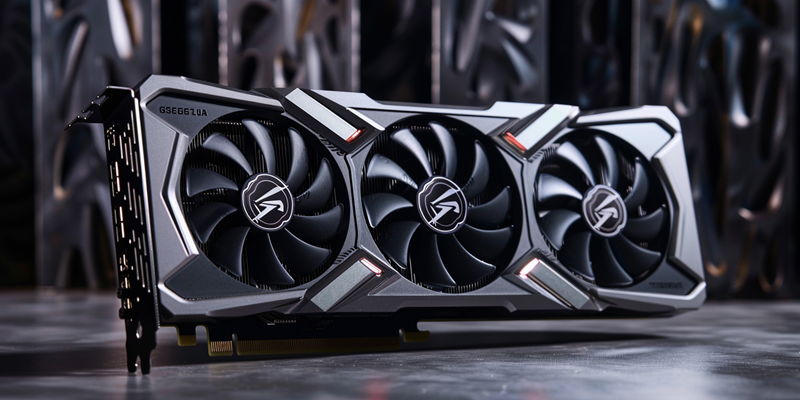ASRock has recently introduced several revisions to its Intel Arc A770 and A750 Challenger SE graphics cards, setting a new benchmark for operational efficiency and aesthetic appeal. These modifications encompass a range of physical changes designed to elevate the user experience. They include an updated cooling system, a reduced physical footprint, and new display connectivity options, all while focusing on practical utility rather than raw performance enhancements. Despite the apparent lack of official announcements from ASRock, these updates signify a strategic effort to retain the market relevance of Intel’s Arc GPU lineup.
Design and Physical Modifications
Reduced Size and Visual Enhancements
One of the most noticeable changes in the updated Intel Arc A770 16 GB OC and Arc A750 8 GB OC models is the reduction in size. The new models are now 2 to 3 percent smaller than their predecessors, making them more compact without sacrificing performance. The exact dimensions stand at 267mm x 130mm x 48mm, a downsizing maneuver that not only saves space but also enhances the GPUs’ compatibility with a wider range of PC cases. The size reduction aims to cater to a growing consumer base that prioritizes compact, yet powerful, system builds.
In addition to the physical downsizing, ASRock has introduced an LED option on the GPU shroud. Controlled via a physical switch, this LED feature allows users to customize the visual aesthetics of their graphics cards easily. The incorporation of this LED functionality reflects a broader industry trend where visual appeal and customization options are becoming increasingly important features for consumers. This aesthetic enhancement seems designed to attract gamers and PC enthusiasts who value both performance and style in their hardware components.
Improved Cooling System
The cooling system of the updated models has been notably enhanced to offer better heat dissipation. The revised design features additional cutouts on the back of the heatsink, optimizing airflow and, consequently, improving the overall thermal performance of the GPUs. This cooling overhaul ensures that the GPUs can operate more efficiently and remain cooler under heavy workloads, which is crucial for maintaining system stability and longevity.
While these enhancements do not directly translate into improved performance metrics, they do signify a commitment to practical utility. By focusing on thermal management, ASRock ensures that these GPUs can deliver consistent performance without overheating, an important aspect for gamers and users with intensive computational needs. These cooling improvements also demonstrate ASRock’s responsiveness to consumer feedback, emphasizing durability and reliable performance over raw, headline-grabbing performance gains.
Connectivity Modifications and Market Strategy
Downgrades and Alterations in Connectivity
Another critical update to the Intel Arc A770 and A750 models involves changes in their connectivity interfaces. Notably, the Arc A770 model now comes equipped with an HDMI 2.0 interface, replacing the previous HDMI 2.1 version. While this may be seen as a downgrade, it indicates a thoughtful balance to optimize cost and performance based on user needs. On the other hand, the Arc A750 model now features a new DisplayPort connection instead of an HDMI port, enhancing its compatibility with modern display technologies.
These connectivity adjustments appear to be tailored to address specific consumer feedback and regional market requirements. For instance, the shift to HDMI 2.0 allows for reduced costs, which can be a significant consideration for budget-conscious consumers. The addition of a DisplayPort connection in the Arc A750 model aims to attract users who need higher resolutions and refresh rates, making it suitable for gaming and professional applications. These changes underline ASRock’s willingness to adapt its products to meet the evolving needs and preferences of its user base.
Regional Market Focus
The introduction of these unannounced modifications seems to align closely with regional market strategies, particularly targeting regions like Japan. According to local media reports, these updated GPU models are anticipated to launch in Japan by July 12, a move that underscores ASRock’s focus on catering to specific regional demands. This regional targeting can provide valuable insights into ASRock’s broader market strategy, suggesting a more localized approach to product launches and distribution.
Focusing on specific markets allows ASRock to better tailor its products to meet local consumer preferences and regulatory requirements. This strategy could very well serve as a testing ground for broader, global releases. The absence of specified plans for a global launch at this moment in time indicates a cautious but calculated approach to expanding the market presence of these updated GPUs. By initially targeting a niche market like Japan, ASRock can gather essential consumer feedback and make further revisions before rolling out the updated models on a larger scale.
Balancing Aesthetics and Practicality
Emphasis on User Experience
ASRock has recently updated its Intel Arc A770 and A750 Challenger SE graphics cards, setting new standards for operational efficiency and visual appeal. These upgrades incorporate a series of physical changes aimed at improving the overall user experience. The revisions include an updated cooling system designed to better manage heat, a more compact physical design, and new display connectivity options, prioritizing utility over sheer performance gains. Notably, these adjustments have been made quietly, without official announcements from ASRock, yet they clearly represent a strategic move to maintain the market relevance of Intel’s Arc GPU lineup amidst growing competition. The emphasis on enhancing practical aspects, such as cooling efficiency and connectivity, rather than focusing solely on performance buffs, suggests a nuanced understanding of user needs. This thoughtful approach helps ensure that the Intel Arc GPUs remain competitive options for a broad range of consumers. ASRock’s efforts highlight their commitment to staying ahead in the evolving tech landscape.

